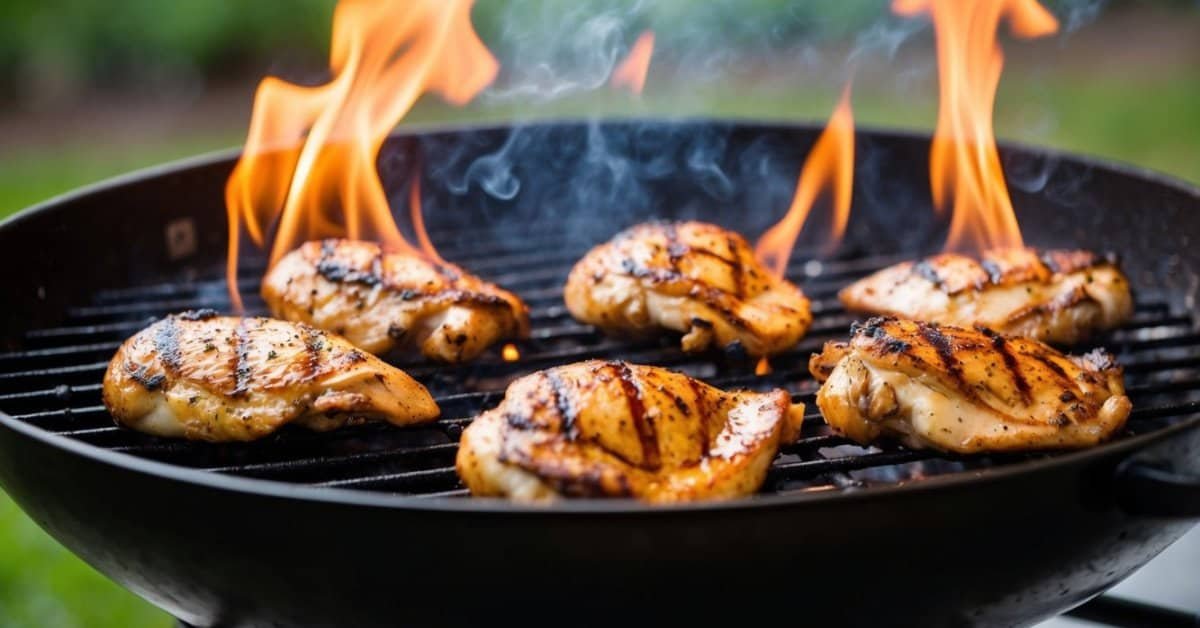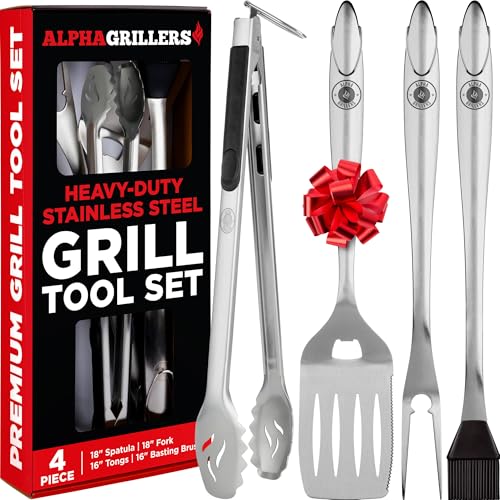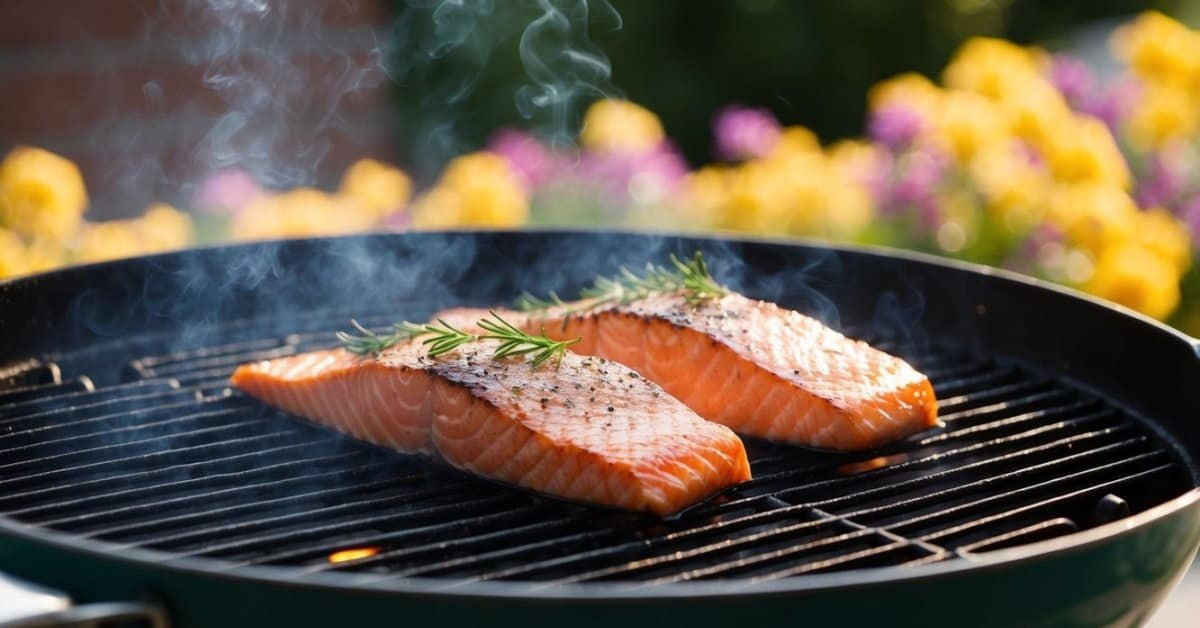Starting my new grill was thrilling, but I quickly learned that seasoning it properly is essential for the best grilling experience. It’s not just about lighting it up and cooking right away. Seasoning helps create a protective layer that prevents rust and enhances the flavor of your food.

In this guide, I’ll walk you through the simple steps to season your grill effectively. Whether you’re a seasoned pro or just getting started, these tips will ensure your grill is ready for countless delicious meals ahead. Taking a few moments to do this can make all the difference in your grilling adventures.
Importance of Seasoning a New Grill
Seasoning my new grill provides essential benefits that enhance my grilling experience:
- Prevents Rust and Corrosion
A seasoned surface forms a protective barrier against moisture, minimizing rust development over time.
- Enhances Food Flavor
The non-stick layer ensures food releases easily, preserving natural flavors and preventing unwanted metallic tastes.
- Extends Grill Lifespan
Regular seasoning maintains the grill’s structural integrity, ensuring it remains reliable for many grilling seasons.
- Improves Heat Distribution
A well-seasoned grill surface promotes even heat distribution, resulting in perfectly cooked meals every time.
- Reduces Cleaning Effort
Food particles glide off smoothly, making post-cooking cleanup quicker and more efficient.
Preparing Your Grill for Seasoning
Before you start seasoning your new grill, proper preparation ensures optimal performance and longevity.
Cleaning the Grill Grates
I begin by removing the grill grates and scrubbing them with warm, soapy water. Using a stiff brush, I eliminate any factory residues or debris. Rinsing thoroughly prevents soap buildup, ensuring a clean surface for seasoning.
Removing Protective Coating
Next, I heat the grill to 400°F for 15 minutes to burn off the protective coating. Once cooled, I scrape off any remaining residue with a metal scraper. This step guarantees that the seasoning adheres properly, providing a durable non-stick layer.
Choosing the Right Seasoning Oil
Selecting the appropriate seasoning oil ensures a durable, non-stick surface on your new grill. I focus on oils with high smoke points and neutral flavors to achieve optimal results.
Recommended Oils
- Flaxseed Oil: Drys quickly, forming a hard layer. Ideal for stainless steel grills.
- Canola Oil: Affordable, with a high smoke point. Suitable for cast iron and stainless steel.
- Vegetable Oil: Versatile and readily available. Good for most grill types.
- Grapeseed Oil: Neutral flavor, high smoke point. Perfect for enhancing food taste.
Comparing Seasoning Oils
| Oil Type | Smoke Point (°F) | Flavor Impact | Best For |
|---|---|---|---|
| Flaxseed | 225 | None | Stainless steel grates |
| Canola | 400 | Minimal | Cast iron and stainless steel |
| Vegetable | 400 | Neutral | Most grill types |
| Grapeseed | 420 | None | Enhancing food taste |
Choosing an oil with a high smoke point prevents it from breaking down during the seasoning process, ensuring a strong protective layer. I prefer oils that don’t impart additional flavors, maintaining the natural taste of grilled foods.
Application Tips
- Apply a thin, even layer of oil using a cloth or paper towel.
- Avoid excess oil to prevent sticky buildup.
- Reapply after each seasoning session for best results.
By selecting the right oil and applying it correctly, I ensure my grill remains in top condition, providing excellent performance for every cookout.
Step-by-Step Seasoning Process
Seasoning your new grill ensures optimal performance and longevity. Follow these steps to create a durable, non-stick surface.
Applying the Oil
Choose an oil with a high smoke point, like flaxseed or canola oil. I apply a thin, even layer using a paper towel, ensuring all grill grates are covered. Reapplying after each seasoning session maintains the protective coating and enhances non-stick properties.
Heating the Grill
Preheat the grill to 400°F and maintain this temperature for 15 minutes. This step burns off any residual factory coatings and allows the oil to polymerize, forming a resilient layer. After heating, let the grill cool naturally to ensure the seasoning sets properly.
Common Mistakes to Avoid
- Using Low Smoke Point Oils: Selecting oils like olive or butter prevents proper polymerization, leading to uneven seasoning.
- Applying Excess Oil: Over-oiling causes sticky surfaces, attracting food particles and hindering non-stick properties.
- Skipping Pre-Cleaning: Neglecting to remove factory residues results in poor oil adhesion and compromised seasoning layers.
- Uneven Oil Distribution: Inconsistent application causes patchy seasoning, affecting heat distribution and cooking performance.
- Ignoring Heating Steps: Failing to heat the grill to the recommended temperature prevents oil from forming a durable protective layer.
- Using Flavored Oils: Oils with strong flavors alter food taste and may degrade the seasoning integrity over time.
- Rushing the Cooling Process: Allowing the grill to cool naturally ensures the seasoning sets correctly, enhancing its resilience.
- Reapplying Thick Layers: Building up thick oil layers requires excessive cleaning and can damage the grill’s surface.
- Overlooking Regular Maintenance: Infrequent seasoning reduces the grill’s lifespan and increases susceptibility to rust and corrosion.
- Choosing Oils with Low Smoke Points: Oils like flaxseed or canola provide higher smoke points essential for effective seasoning.
Maintaining Your Seasoned Grill
Regular maintenance keeps my seasoned grill performing optimally. I follow these essential steps:
Clean After Each Use
After every grilling session, I scrape off food residues using a grill brush. This practice prevents buildup and preserves the seasoning layer.

Protect from the Elements
« Grilled Corn on the Cob with Chili Lime Butter – Perfect for Summer BBQs
Troubleshooting Low Flame on Gas Grills: Essential Tips for Stronger Heat »
I cover my grill with a weather-resistant cover when not in use. This step shields it from rain, snow, and UV rays, reducing the risk of rust and corrosion.
Reapply Oil Periodically
Every month, I apply a thin layer of high smoke point oil, like canola or grapeseed, to the grates. This reapplication maintains the non-stick surface and reinforces the protective seasoning.
Inspect for Rust and Damage
I inspect the grill grates and other components for signs of rust or wear. Early detection allows me to address issues before they escalate, ensuring the grill’s longevity.
Store Properly During Off-Seasons
During the off-season, I store my grill in a dry, sheltered area. Proper storage minimizes exposure to moisture and extends the grill’s lifespan.
Perform Deep Cleaning Annually
Once a year, I perform a deep cleaning by disassembling removable parts and scrubbing them with warm, soapy water. After drying, I reassemble and re-season the grill to restore its optimal performance.
Optimize Heat Distribution
I regularly check and adjust the grill’s burners and vents. Maintaining proper heat distribution ensures even cooking and enhances the overall grilling experience.
By adhering to these maintenance practices, my seasoned grill remains in excellent condition, ready for countless delicious meals.
Conclusion
Seasoning my new grill transformed my grilling experience. It’s amazing how a simple step can protect against rust and enhance every meal. I appreciate the easy release of food and the rich flavors that come through. Keeping up with regular maintenance now feels effortless, and knowing my grill will last for years gives me peace of mind. Embracing these steps has made grilling more enjoyable and stress-free. I’m excited for all the delicious meals ahead and the many gatherings around the grill. Happy grilling!















